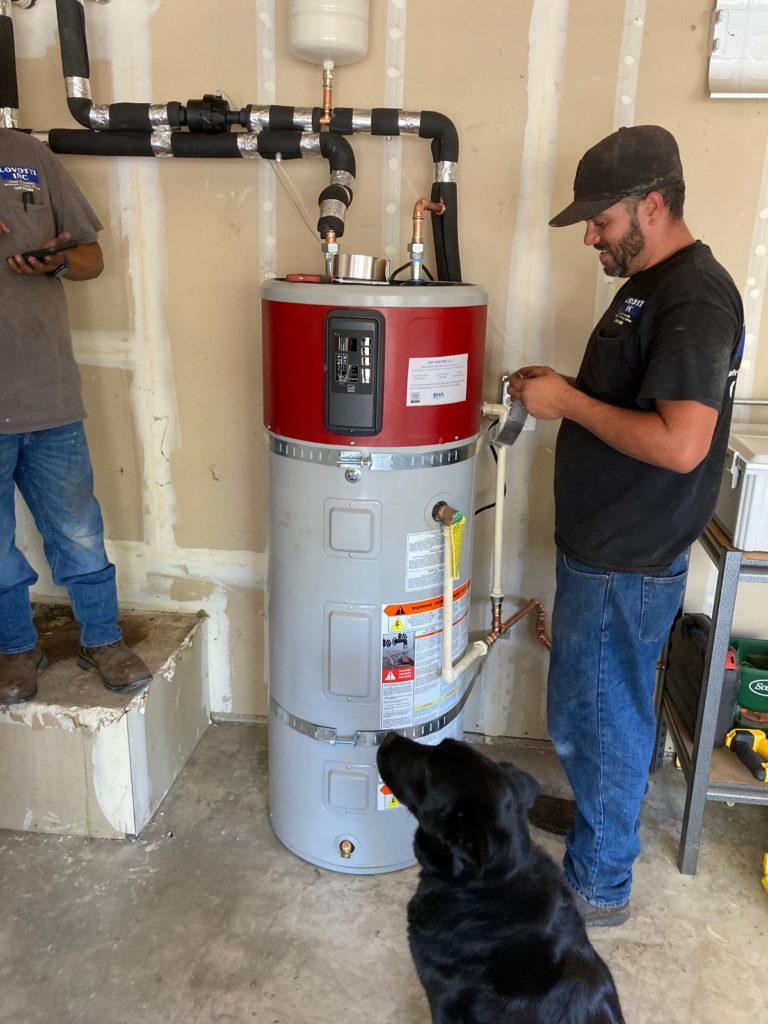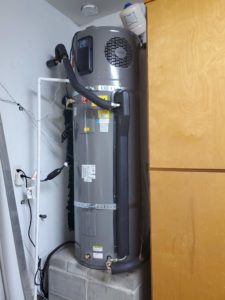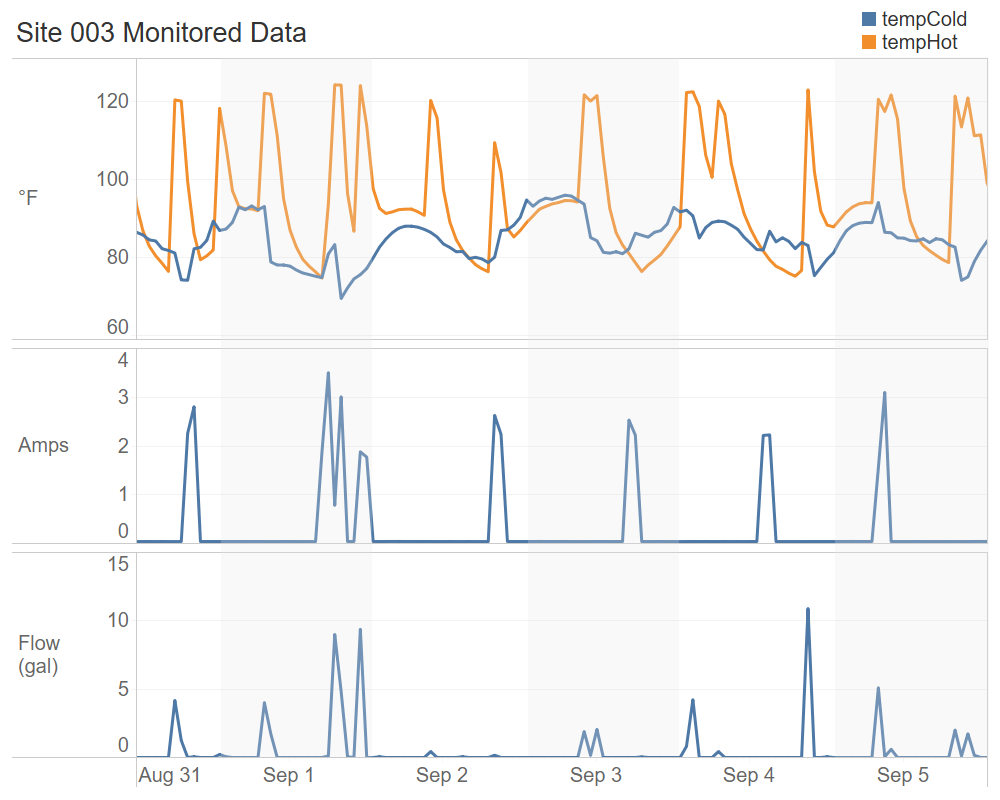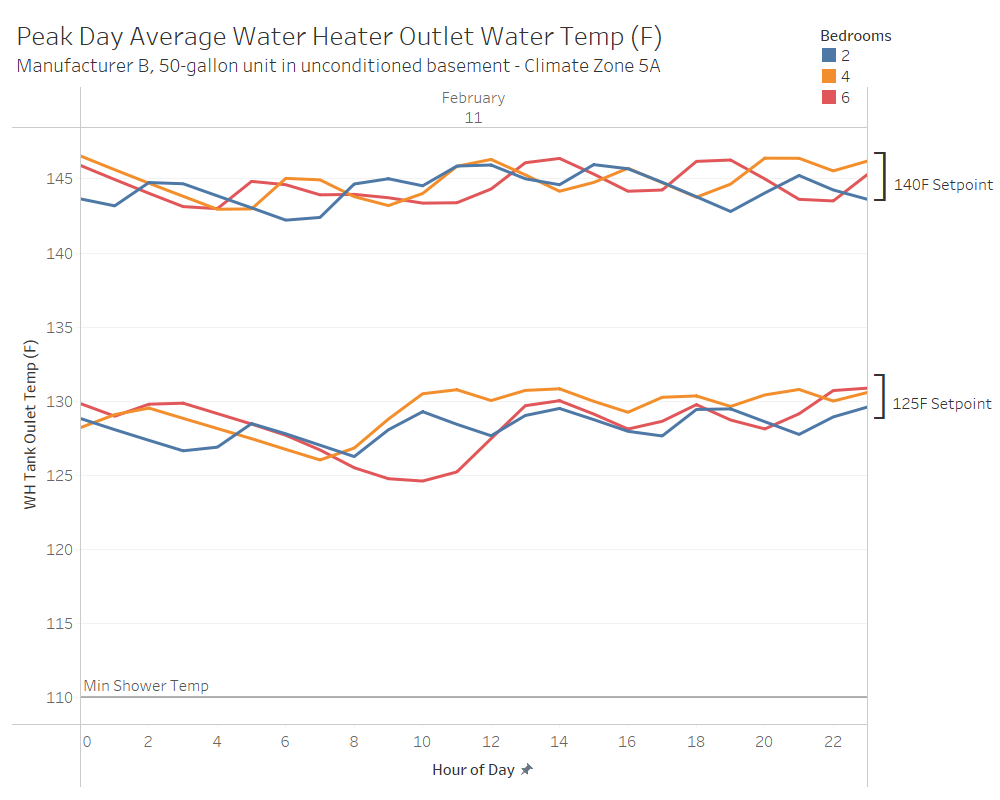In an effort to combat climate change, lawmakers in many parts of the U.S. are pushing for building electrification—or the phasing out of fossil-fuel powered appliances and heating and cooling systems in the built environment. It’s very encouraging to see the Inflation Reduction Act set billions of dollars aside for improving the built environment, which will lead to healthier indoor environments, lower energy costs, and climate benefits. In many parts of the country, ambitious climate bills have already been driving the advancement of electrification technologies that will result in significant climate and electrical grid benefits.
Carbon and energy savings from heat pump water heaters (HPWHs) are substantial. HPWHs are four times more efficient than traditional gas and electric resistant water heaters. There are about 118 million water heaters operating nationally, and more than 50% of them utilize gas to heat water. Our research shows that transforming the water heater market in favor of electric HPWHs would cut emissions by nearly 100 million tons of carbon. Plus, they act as energy storage devices, helping utilities balance electricity supply and demand (they make hot water when the sun/wind is producing clean energy and store it for later use).
Yet in many parts of the country, HPWHs still aren’t common with only 2% market penetration based on the 2021 ENERGY STAR Unit Shipment and Market Penetration Report. That’s in part because until very recently, the only option on the market was a 240-volt model, which requires a specific type of electrical outlet and wiring. In new construction, that’s not a problem. But when replacing this technology in existing buildings, installing a 240-volt HPWH almost always triggers an electrical panel upgrade, which costs on average $1,000-$3,000 depending on the part of the country where you live.
Laying the groundwork for 120-volt HPWHs

In California, a whopping 85% of water heaters use gas for heating water. There, we are testing a new type of plug-in HPWH that could prove to be game changing for the water heating market—and for cities and states seeking to decarbonize buildings and phase out fossil fuels. Spearheaded by the Advanced Water Heating Initiative, the 12-month study is providing free 120-volt HPWHs to about 32 qualifying single-family and multifamily homes. Unlike the 240-volt version that’s commonplace today, the 120-volt model can be plugged into an existing outlet, making it easier and cheaper to swap them for conventional models.
Participating households must have an existing gas-fired tank-style water heater and meet the screening criteria. They also agree to participate in monitoring and data collection for 9-12 months, covering both summer and peak winter conditions.
The study is made possible through our installation partners RHA and kW Engineering with funding from Pacific Gas and Electric, Southern California Edison and Sacramento Municipal Utility District, TECH Clean California, and Pacific Northwest National Laboratory.
We are looking at a variety of factors: what impacts homeowners’ decisions to replace water heating equipment, how easy the equipment is to install for different vintages, how the equipment performs in different climates, different hot water demand profiles, and customer and installer’ overall satisfaction with the product. In addition to validating the technology, the study also intends to create market confidence and build demand for this retrofit ready technology.
Throughout the monitoring period, which goes until Quarter 1 of 2023, the research team will be tracking the incidence of hot water runout events, electricity consumption, and water temperatures. Once the performance of the water heater is validated, for a subset of the sites, the team will also test load shifting capability of the HPWHs. Periodic surveys will provide insight into the customer experience and satisfaction level with the 120-volt technology. The research team will also gather data from installers related to installation costs, ease of installation, and training needs.

While the study is focused in California, what we learn from this field validation study will provide important insights that could lead to widespread adoption of 120-volt HPWHs in existing buildings nationwide.
Early findings from the field
In this study, the 120-volt HPWHs are monitored for five-second intervals, allowing us to capture granular flow data as well as energy consumption data (see snapshot of the monitored data below). The water heaters will be monitored for a 10-12 month period to capture the performance of the 120-volt HPWHs during the peak of winter.
We have completed more than a dozen installations with two manufacturers testing 50, 65, and 80-gallon units for low and medium-energy demand sites. Installations have occurred in garages and closets, both indoors and outdoors. The site images to the right show capped gas lines and flue lines as a result of the 120-volt HPWH replacements.
Building occupants are satisfied with the performance of the 120-volt models, but we’re still in the early stages of the study. As the winter months approach, we gather critical performance, energy, and operating cost information on this emerging technology. In the meantime, building occupants can take advantage of load management programs and incentives from participating utilities, as HPWHs are a “smart” technology that can be integrated with the grid to operate when energy is cleaner and less expensive.
While the study is just getting underway, we have already determined barriers related to permitting, plumbing code, and space limitations. We will share these and other findings, along with recommendations for improving market adoption, in the final report expected in Quarter 2 of 2023.
Figure 1. Monitored data for a typical household

Expanding our research to the Midwest and beyond
New Buildings Institute (NBI) in partnership with Slipstream is currently working with four utilities in the Midwest to assess the market for 120-volt HPWH products and analyze if this technology is appropriate for conditioned or semi-conditioned spaces like basement applications in colder climates. The results so far show that 120-volt models can meet hot water demand for indoor and semi-conditioned installations. The modeling analyzed performance of 120-volt HPWH for peak days to see energy consumption, operating costs, and if there are any cold-water events.
The figure below shows that hot water temperatures at 125°F and 140°F setpoints do not approach the 110°F threshold for a cold-water event (Maguire. J. 2018), even for a 4-6 bedroom household.
Figure 2. Average water heater outlet temperature for highest hot water use day

In New Orleans, the Pacific Northwest National Laboratory has launched a study focused on 120-volt HPWH installs in the residential sector. Electric Power Research Institute (EPRI) will also test some of the 120-volt models in small commercial applications.
Breakthrough technologies such as 120-volt HPWHs will be paramount for addressing the climate crisis. In states with aggressive climate goals, many utilities are incentivizing customers to replace their water heating equipment. But in the future, stricter building codes and policies will likely mandate the use of efficient, electric hot water and space heating equipment. The results of the 120-volt field validation study currently underway in California will provide manufacturers, utilities, and other partners with the confidence they need to add new HPWH models to incentive programs.
If you are interested in being a field study funder or partner, please contact us by email at [email protected]. More information is available in this printer-friendly factsheet.
Read more about 120-volt HPWHs and our field study efforts in the 2022 ACEEE Summer Study report, Game Changing Retrofit Ready Technology: 120-volt HPWHs.
by Amruta Khanolkar, Senior Project Manager
Did you enjoy this content? Consider supporting NBI’s work with a donation today.

